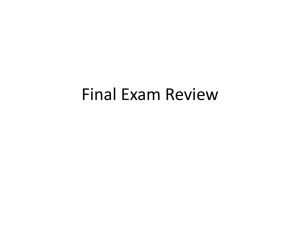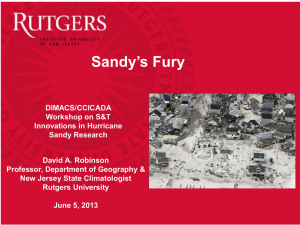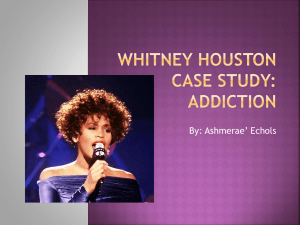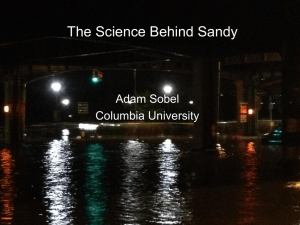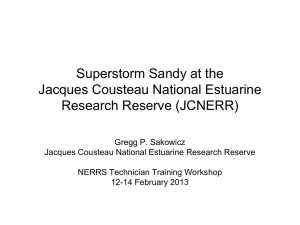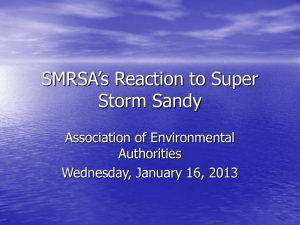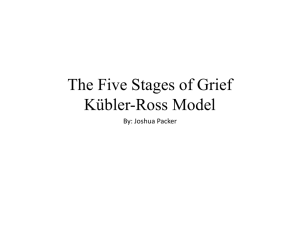NCSE Tweeting Disaster Poster - UCF Political Science
advertisement
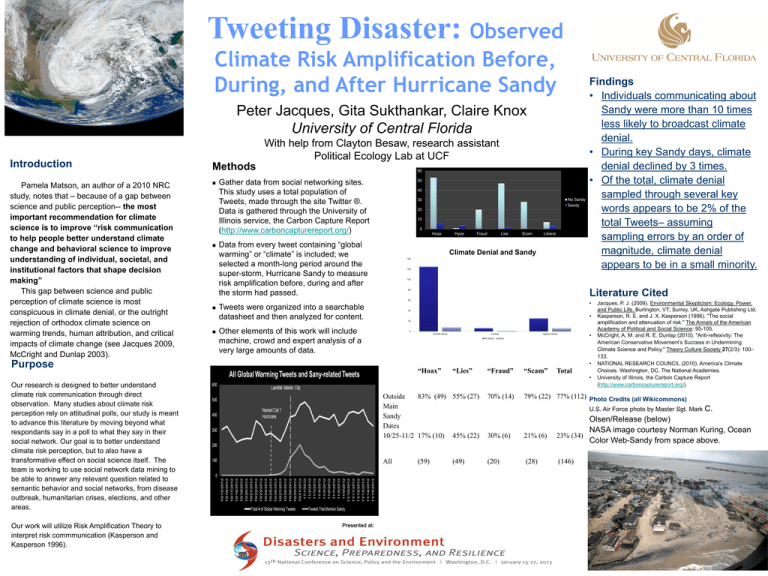
Tweeting Disaster: Observed Climate Risk Amplification Before, During, and After Hurricane Sandy Peter Jacques, Gita Sukthankar, Claire Knox University of Central Florida Introduction Pamela Matson, an author of a 2010 NRC study, notes that – because of a gap between science and public perception-- the most important recommendation for climate science is to improve “risk communication to help people better understand climate change and behavioral science to improve understanding of individual, societal, and institutional factors that shape decision making” This gap between science and public perception of climate science is most conspicuous in climate denial, or the outright rejection of orthodox climate science on warming trends, human attribution, and critical impacts of climate change (see Jacques 2009, McCright and Dunlap 2003). With help from Clayton Besaw, research assistant Political Ecology Lab at UCF Methods 60 50 Gather data from social networking sites. This study uses a total population of Tweets, made through the site Twitter ®. Data is gathered through the University of Illinois service, the Carbon Capture Report (http://www.carboncapturereport.org/) 40 20 10 0 Hoax Data from every tweet containing “global warming” or “climate” is included; we selected a month-long period around the super-storm, Hurricane Sandy to measure risk amplification before, during and after the storm had passed. Hype Fraud Lies Scam Liberal Climate Denial and Sandy 140 120 100 Tweets were organized into a searchable datasheet and then analyzed for content. 80 Literature Cited 60 • 40 • 20 Other elements of this work will include machine, crowd and expert analysis of a very large amounts of data. 0 Climate Denial Unclear No Sandy Purpose • Against Denial Sandy • “Hoax” Our research is designed to better understand climate risk communication through direct observation. Many studies about climate risk perception rely on attitudinal polls, our study is meant to advance this literature by moving beyond what respondants say in a poll to what they say in their social network. Our goal is to better understand climate risk perception, but to also have a transformative effect on social science itself. The team is working to use social network data mining to be able to answer any relevant question related to semantic behavior and social networks, from disease outbreak, humanitarian crises, elections, and other areas. Our work will utilize Risk Amplification Theory to interpret risk commmunication (Kasperson and Kasperson 1996). No Sandy Sandy 30 Findings • Individuals communicating about Sandy were more than 10 times less likely to broadcast climate denial. • During key Sandy days, climate denial declined by 3 times. • Of the total, climate denial sampled through several key words appears to be 2% of the total Tweets– assuming sampling errors by an order of magnitude, climate denial appears to be in a small minority. Presented at: “Fraud” “Scam” Outside 83% (49) 55% (27) Main Sandy Dates 10/25-11/2 17% (10) 45% (22) 70% (14) 79% (22) 77% (112) Photo Credits (all Wikicommons) 30% (6) 21% (6) All (20) (28) (59) “Lies” Jacques, P. J. (2009). Environmental Skepticism: Ecology, Power, and Public Life. Burlington, VT; Surrey, UK, Ashgate Publishing Ltd. Kasperson, R. E. and J. X. Kasperson (1996). "The social amplification and attenuation of risk." The Annals of the American Academy of Political and Social Science: 95-105. McCright, A. M. and R. E. Dunlap (2010). "Anti-reflexivity: The American Conservative Movement’s Success in Undermining Climate Science and Policy." Theory Culture Society 27(2/3): 100– 133. NATIONAL RESEARCH COUNCIL (2010). America’s Climate Choices. Washington, DC, The National Academies. University of Illinois, the Carbon Capture Report (http://www.carboncapturereport.org/) (49) Total • U.S. Air Force photo by Master Sgt. Mark C. Olsen/Release (below) NASA image courtesy Norman Kuring, Ocean 23% (34) Color Web-Sandy from space above. (146)
